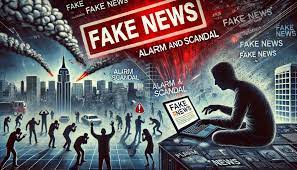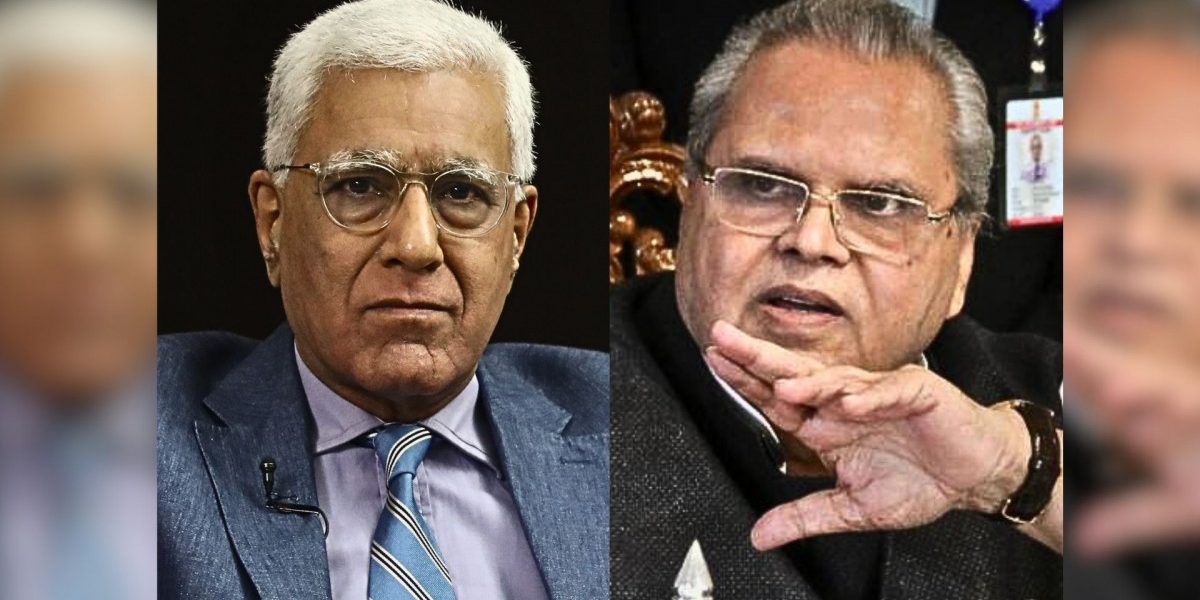J&K Government Crackdown on Fake Journalists: Restoring Credibility in Kashmir’s Media Landscape
By: Javid Amin | 01 November 2025
A Landmark Directive to Protect Journalism’s Credibility
The Jammu and Kashmir Information and Public Relations Department (DIPR) has issued a strong directive against media impersonation, warning of strict legal and administrative action against individuals misusing press identities for blackmail, extortion, or defamation.
The communique, addressed to District Information Officers (DIOs), Deputy Commissioners (DCs), Senior Superintendents of Police (SSPs), and accredited media houses, marks one of the most comprehensive attempts by the J&K administration to safeguard journalistic integrity and restore public trust in the region’s information ecosystem.
The Official Communique: Who It Targets and Why
Issued by the Joint Director, Information & PR, Kashmir, the official circular—first reported highlights an alarming trend: individuals without formal accreditation or authorization posing as journalists or correspondents of reputed media organizations.
The document states:
“Repeated complaints have been received from field officers of different departments, public representatives, and media houses that certain individuals, without formal accreditation, are posing as journalists in the field. These persons have, in several instances, misused the name of media for blackmail, extortion, and coercion of officials.”
It further notes that several such individuals have been apprehended and booked for extortion and misuse of media identity—evidence, the department says, of the seriousness of the menace.
Government’s Core Mandate: Verification and Vigilance
The directive mandates a multi-tiered system of verification and accountability, tasking officials across districts to ensure no room is left for impersonation or unethical practices.
Key Instructions to DIOs, DCs, and SSPs
-
Maintain Verified Media Lists:
Each DIO must maintain and regularly update a list of accredited, authorized, and bona fide media persons operating within their districts in consultation with DIPR and recognized media houses. -
Restrict Access to Verified Journalists:
All press releases, invites, and official briefings must be shared only with verified journalists or media outlets, preferably through authenticated digital channels. -
Immediate Reporting and Action:
Any person or entity found misusing media credentials, indulging in coercion, or maligning officials or institutions for personal or financial gain must be reported immediately. -
Coordination with Law Enforcement:
DIOs must coordinate closely with Deputy Commissioners and SSPs to initiate legal and administrative action, submitting full factual details to the department without delay. -
Departmental Advisory:
District offices have been instructed to verify credentials before granting access or hospitality to anyone claiming media affiliation. -
Vigilance Reports:
Each DIO must submit periodical vigilance notes highlighting incidents, field inputs, and preventive steps taken.
Guidelines for Media Houses: Clean Your Own House
The communique goes beyond government offices, extending accountability to the media organizations themselves. It directs editors and publishers to:
-
Exercise due diligence while appointing correspondents, freelancers, and stringers.
-
Engage only verified, credible journalists with proper authorization letters and ID cards.
-
Take disciplinary and legal action against representatives found indulging in coercion or unethical conduct.
-
Publicly disassociate from individuals misusing their name or credentials.
-
Refrain from endorsing or employing those facing credible allegations of extortion or defamation.
The directive concludes with a call to “uphold the code of journalistic ethics as laid down by the Press Council of India and DIPR guidelines.”
According to officials, these steps aim to protect journalism’s credibility and ensure ethical media practices across Jammu and Kashmir.
Background: Growing Concerns Over Fake Journalists
This new communique follows a series of earlier warnings by the DIPR, which has been receiving escalating complaints over the past few years about people masquerading as journalists and exploiting press credentials.
Field officers and genuine reporters have repeatedly flagged issues of intimidation, coercion, and extortion by unverified individuals. Some used fake ID cards or bogus YouTube channels, while others demanded money or favors in exchange for “positive coverage.”
The government’s decision comes at a time when digital media proliferation has made it easy for anyone with a camera or social media page to claim the title of journalist—often without any training, ethics, or accountability.
DIPR’s Larger Vision: Reform, Not Restriction
Officials within the Information Department describe this move as part of a larger effort to reform and professionalize media operations in the Union Territory.
A senior DIPR officer told Greater Kashmir:
“We are not targeting digital journalism or free speech. Our goal is simple — to protect the credibility of real journalists and ensure that those misusing the profession for blackmail or extortion face legal consequences.”
This distinction is critical. The government insists that legitimate journalists—accredited, ethical, and verified—remain protected and supported. The crackdown, officials say, is aimed solely at impersonators tarnishing the image of the media fraternity.
The Legal Framework: Criminal Impersonation and Extortion
Under Indian law, impersonation, blackmail, and extortion are punishable offenses under sections of the Indian Penal Code (IPC), including:
-
Section 419 – Punishment for cheating by personation
-
Section 384 – Punishment for extortion
-
Section 500/501 – Defamation
-
Section 66D of the IT Act – Impersonation using electronic means
The new directive reinforces that misuse of media identity will attract criminal liability, not just administrative censure.
Impact on Kashmir’s Media Landscape
1. Restoring Public Trust
For years, genuine reporters in J&K have expressed frustration over the growing number of fake journalists who damage credibility and undermine access to official sources.
With this crackdown, officials and the public may regain confidence that press interactions are authentic and not a front for coercion or misinformation.
2. Protecting Ethical Journalism
This initiative also shields legitimate journalists from collective suspicion. By distinguishing the verified from the fake, it reaffirms the professional standing of those who uphold journalistic ethics.
3. Strengthening Institutional Coordination
For perhaps the first time, there’s structured coordination between the Information Department, administration, and police, ensuring impersonation cases are treated as serious crimes, not minor infractions.
Reactions from the Ground
Media Professionals Welcome Accountability
The move has drawn strong support from senior journalists and editors across Kashmir.
Veteran broadcaster Shahid Rashid called it “an essential correction in a media space that was losing direction.”
“Journalism thrives on integrity. Fake reporters using press cards for blackmail were staining our collective reputation. This vigilance will separate truth-seekers from opportunists,” he said.
Public Endorsement
Ordinary citizens, too, have welcomed the decision. Shopkeepers, business owners, and local officials—often the targets of coercion—say this is the first time authorities have taken the problem seriously.
Challenges Ahead: Regulation vs. Freedom
While most in the media fraternity support the government’s action, some caution that excessive bureaucracy could stifle small digital voices or independent reporters.
Experts suggest a balanced framework, where:
-
Accreditation remains transparent and inclusive.
-
Digital journalists can apply through clear, verifiable procedures.
-
Government oversight does not become censorship.
Dr. Bilal Ahmad, a media researcher at the University of Kashmir, noted:
“The goal should be professional regulation, not political control. We need modern accreditation models that include digital journalism but ensure responsibility.”
Broader Implications: A Model for Other States
Jammu and Kashmir’s proactive stance could serve as a blueprint for other states grappling with similar issues. Across India, media impersonation has become a growing concern, especially with the rise of unverified online portals and YouTube-based news channels.
The J&K initiative demonstrates how vigilance, verification, and legal enforcement can work together to protect both press freedom and public interest.
Ethics and Accountability: The Way Forward
1. Strengthening Accreditation Systems
The DIPR is expected to update and digitize its accreditation system, possibly introducing QR-coded press cards and online verification portals accessible to the public and officials alike.
2. Promoting Media Literacy
Citizens need to know how to verify journalists and report impersonation attempts. Awareness campaigns can empower people to challenge fake reporters without fear.
3. Empowering Local Media Houses
Editors and publishers must play a proactive role by ensuring background checks, transparent hiring, and clear ethical codes within their organizations.
4. Independent Oversight
Civil society groups and journalist associations can form independent oversight panels to handle complaints of media misconduct before they escalate into criminal acts.
The Larger Message: Journalism is a Trust, Not a License
At its heart, the directive sends a simple but powerful message: journalism is a responsibility, not a license to intimidate.
By cleansing the profession of imposters, the government is not curbing freedom—it is protecting the integrity of that freedom.
This moment offers a chance for reflection within the media fraternity—to recommit to truth, ethics, and the sacred bond between journalist and public.
Bottom-Line: Credibility is the New Reform
The crackdown on fake journalists in Jammu and Kashmir is not merely administrative; it is symbolic of a deeper reform.
It seeks to reclaim journalism from opportunism, reaffirm ethics over sensationalism, and restore the dignity of an institution long under siege.
If implemented fairly and transparently, this directive could transform J&K’s media landscape into one that is more credible, accountable, and worthy of public trust—a model not just for Kashmir, but for democratic journalism across India.
Author’s Editorial Note:
The fight against fake journalism is not a fight against journalism itself—it’s a fight for its survival. Kashmir’s press community now stands at a crossroads: embrace reform, or risk losing public faith forever.


